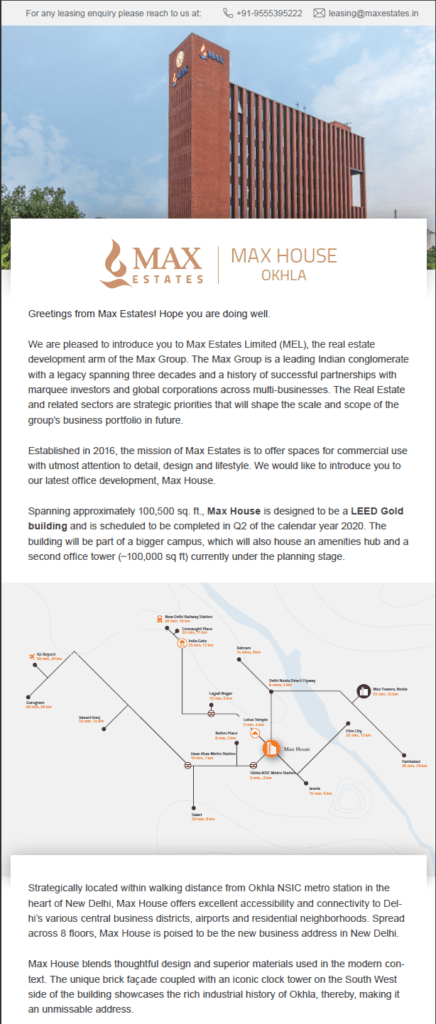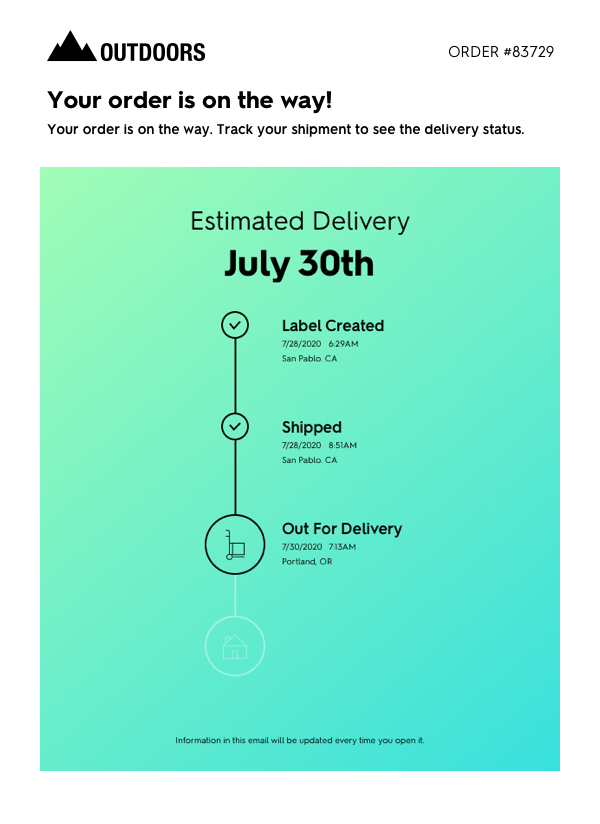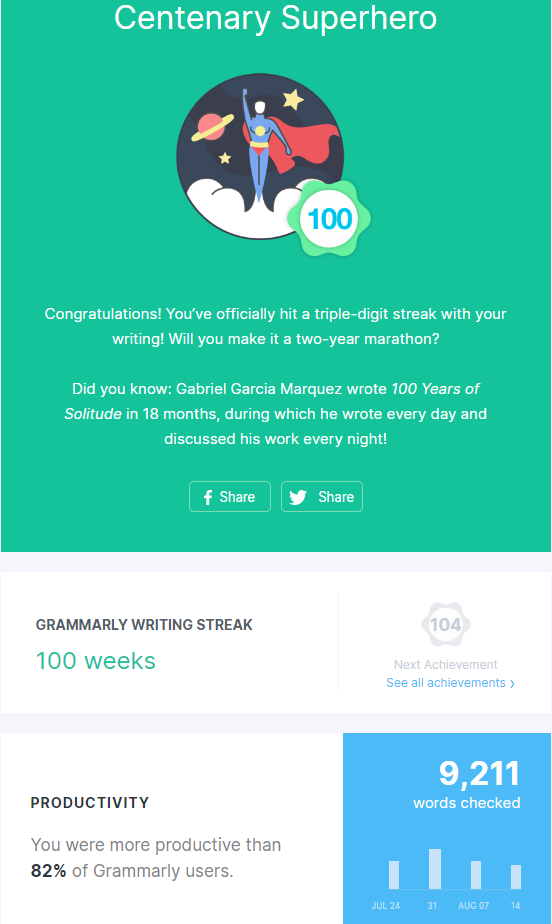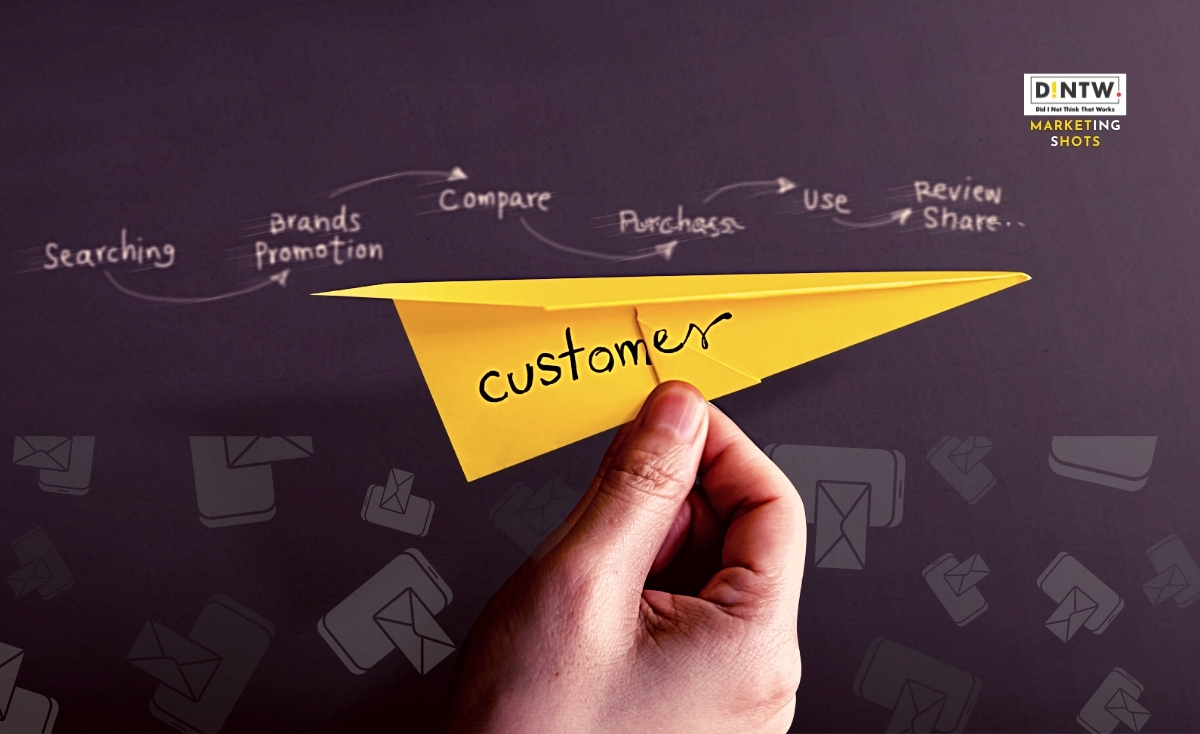In the past twenty-four months, numerous disruptions in business models, consumer behaviour, and digital transformation have brought significant change to the customer journey map in the context of a growing enterprise. Customers are reconsidering their allegiance to a favoured company. This time, the focus is on rewritten experiences and revised priorities. The unique factors will influence what customers choose and how their customer journey map will look, i.e. how they pick.
It is a fundamental shift in the buying journey, which, if not understood properly, can lead to the erosion of loyalty, resulting in reduced business revenues. This article will share the step-by-step process of building customer journey maps for email marketing campaigns across customer touchpoints. The good news is that the customer journey map is one of the core features of a marketing automation platform that can be used to create new user journeys.
Companies will have to go back to the drawing board once again, map out buyers’ journey and design marketing campaigns – a slight difference in approach produce vastly different results.
Harvard Business Review
How should businesses realign customer journey maps following customer touchpoints?
Companies across sectors view customers as multi-channel or “multi-moment” consumers. For example, “Blue Apron” (a food delivery company) and ‘HelloFresh’ (another food delivery company) launched their separate marketing campaigns highlighting their purpose of simplifying the grocery shopping process, albeit online and offline, respectively.
Companies should realign their user journey maps to different facets of marketing—both online and offline marketing.
- Paid marketing, content marketing, social media marketing, search engine optimization, and email marketing comprise digital marketing.
- Consider physical stores, newspaper advertising, out-of-home advertising, and radio campaigns for offline marketing.
As per a Harvard Business Review survey, “companies that have adopted different approaches to the customer journey and offered a personalized customer experience have seen more than six times the growth in profitability Y-o-Y.”
Consequently, Online-to-Offline marketing will flourish in the era following the pandemic. Consumers will visit your brand store following online purchase trials for existing customers or if you differentiate your online and offline products. But what exactly is online-to-offline marketing? It’s an emerging trend in which a consumer searches for products or services online and chooses to complete their purchase by visiting a physical store.
For example, if you’re marketing home appliances online, you’ll engage your customers with services like free home delivery and installation to complete the purchase. In short, to successfully market products online to your customers offline, you need a hybrid of online and offline marketing strategies
What is the application of Customer Journey Mapping?
A customer journey map is a visual blueprint of how your potential customers, partners, and suppliers interact with your brand, from being unaware to becoming a customer. The buyer’s journey isn’t linear and is impacted by factors like a marketing campaign, customer interaction, awareness stage, etc. The recent eCom sprint has pivoted marketing strategy to a different level. Therefore, Buy Now Pay Later (BNPL) has replaced COD and become the most sought mode of payment across all product verticals.
It would be best if you used journey maps for two reasons. One is to identify the weak links in your marketing campaign and impact your customer retention or new acquisitions. The other is to record the high points in your customer behaviour and repeat them across different stages.
If you haven’t created your customer need journey, you can follow the below mapping process:
- Define your customer persona – who is your customer
- The buying process – touchpoints with your brand, online, in-store, direct-selling
- Marketing touchpoints – at each stage – website, social media, Email
- List down all resources – who interact with the customer – customer service, sales team, retailer
- Emotion and Pain-points – customer complaints, customer drop-out, disqualification. Happiness, compliment, testimonial
- Conversion Levers – what moves a prospect to customer, brand endorser or a detractor
How are Email Marketing and Customer Journey related?
Many brands adopt customer-centric values and business models, so the marketing campaign is mapped to the buyer’s journey. In email marketing, customer journey analytics provides valuable data such as a user persona, user research, buying stage, etc., enabling you to connect with a niche audience on a more personal level.
The marketing strategies and buyer journeys of B2B and B2C companies are distinct. Consequently, different customer segments associated with your organization will have unique journeys. For example,
Design your company’s customer interaction strategy so that you can communicate with your potential and existing customers regardless of their location. Therefore, the customer experience is customized and relevant.
Segmented and analytics data for each customer cohort throughout the customer journey will provide valuable insight into how various groups behave at a particular point in the customer lifecycle. (You can refer to Google Analytics data and goals to get a further deep dive). This is important because it enables the customer data to be analyzed, segmented and served at each stage of the journey. For example, when customers create an account, they provide us with their demographic information. Therefore, in the context of B2C and B2B businesses,
- Utilize targeted emails for multiple B2C journey events, including welcome emails, transactional emails, cart abandonment emails, etc.
- The customer touchpoint for B2B customer journeys could include insights, product demonstrations, case studies, testimonials, and surveys, among other content types.
Remember that a customer journey map must be integrated across all marketing channels (paid marketing, social media, search engine marketing, customer service, and public relations). If required, employ a Digital Marketing Partner to keep track of company data across all channels in real-time. This way, the partner will determine the most effective campaign and avoid the classic email marketing mistake – sending generic or un-targeted emails.

What are the various types of email marketing campaigns across customer journey maps?
We will examine best practices in greater detail below. The case studies discussed in this article result from our analysis and interpretation of data from various journey mapping, customer behaviour analysis, client campaigns, and hands-on experiences on various customer journey mapping tools like Lucidchart, Figma, and Powerpoint conversations with successful founders and marketers.
What are brand awareness emails, and how do they benefit a business?
The brand awareness email is the first trigger in the customer journey map. Email is essential at the beginning of the sales process. Most spam and forced promotions surface from email marketing at the top of the funnel. You cannot afford to project that image as a new brand. However, it’s also one of the best ways to interact with potential customers and sign them up for a mailing list. Email newsletters that prospects have subscribed to are more likely to be opened and clicked increasing conversion rates.
Consider building an aspirational brand. Aspirational brands market experiences rather than goods. As a result, they have brand devotees from the beginning of the customer journey. Even though I can’t currently afford a Tesla, I intend to keep up with the business and participate in their email and Instagram communications.
Here is the set of brand awareness email campaigns for Top of the Funnel Activity
- Integrate email campaigns with social media marketing and invite users to sign up for regular email updates.
- Welcome series email campaigns are appropriate for new prospects and subscribers in the consideration and awareness stages. And users will continue to subscribe to your campaign if they find value and a connection with your brand.
- To continue the customer journey, use brand emails to develop buyer persona and email campaign segmentation.
- If you do not have an extensive captive database, you can offer email newsletter sponsorship opportunities to a publisher specializing in your industry.
- Sponsor the email newsletter with in-email product placement. Offer deals in advance to gain traction.
- Run competitions and prize draws to create engaged followers and promote social shares for your brand.
What are the various types of Emails used to acquire leads?
A qualified lead consists of a potential customer’s name, email address, and information about his interaction with the brand (website visit, email open, CTR, or any other engagement metric). It is the beginning of a sales cycle in the customer’s journey.
The sales cycle is a sequence of activities that moves a prospective customer from the brand awareness stage (qualified lead) to the marketing qualified lead stage (MQL). At this stage, the prospect is between the middle and the bottom of the funnel. The objective is to foster familiarity and interest and convert him into a sales-qualified lead (SQL). Consequently, offering a bonus to close a sale.
Follow the email strategy outlined below for lead acquisition emails
- Emails for Lead Nurturing based on user interest and previous interactions
- Discount on recent product search
- Announce a preview of upcoming sales.
- Free membership/Trial membership – DINTW’s ISV and SAAS clients have benefited tremendously from a free trial and demo.
Email nurture tracks for the B2B customer journey must be highly contextual. Otherwise, you risk losing their interest.
- The Welcome Email is their permission to interact with your brand—use it wisely to provide a memorable experience.
- Invite them to a conference or webinar with an existing client; live testimonials are always more convincing.
- Offer them free product trials, as most social media automation tools for B2B marketing automation do.
- Send user guides and industry reports to leads who register on your landing page or blog—users avoid negative probability in any high-value investment by subscribing.
Where do research emails fit into the buying process?
Search engines and social media are used throughout the customer journey to discover a brand. Email campaigns cannot be indexed by search engines such as Google. On the other hand, email marketing campaigns can be tailored to users’ inquiries on these platforms.
The time between research and purchase varies for products with low involvement, low risk, and quick consumption, such as reserving a meal, purchasing a pen, and hiring a taxi for the day. However, users will conduct more research before hiring a digital marketing agency for cloud hosting and software services. The greater the risk, the greater the research required.
Brands must compile a list of questions posed by users during product and brand evaluation and then send them relevant information via Email. Recent Google algorithm updates favour pages with content based on user intent. Examine the bottom of the Google Search Results Page for search terms related to your query. An example is given below.

- How to Emails are useful for addressing user intent, such as choosing a service provider or a vacation destination.
- What are the brand’s characteristics, product types, and colour choices? – Apple does an excellent job of keeping the brand active with email campaigns. Apple sends awesome emails that answer questions about product components, product version, and product type. The email campaign below is sent when Apple users search for a last-minute Valentine’s Day gift.
- Emails sent to users during their research phase include Customer Testimonials, Coupon Codes, Sales Announcements, and Free Service Camps.
We discovered that commercial real estate client decision-makers were seeking a variety of information regarding the location of their prospective office, including location advantage, safety, parking, and hospital. Our email campaign focused on the benefits of various places; open email rates increased by 55%, and sales inquiries increased by 2X.
Apple’s Valentine’s Day emails feature various products, each with information about their version, price, accessories, and offers. You can convince your customers to purchase from you by emailing relevant content at the right time.

Apple Emailers for Valentine’s Day exhibit a bouquet of products with recency, version, price, accessories, and offers.
Max Real Estate email for presenting location advantage during office search

What is the strategy for email marketing for users in the consideration stage of the customer journey?
At this stage, the buyer is familiar with your company. He is considering his choices. Price, quality, service, and maintenance are his primary deciding factors. Here is where your marketing strategy must convince the audience of your competitive advantage. At this stage of the buying process, audience members know what your company offers.
What are your competitive advantages? Here are a few examples of customer journey map templates that you can use:
- Direct to consumer brand companies: You must send emails with a competition comparison checklist, discounts, free trials, and a Buy-Now, Pay-Later offer. (BNPL has revolutionized the e-commerce industry, leading to a 44% increase in sales conversion.)
- B2B companies If you have an experience centre where users can receive a free demo or experience a soon-to-be-released feature, send an email from your R & D director inviting subscribers to visit.
- This may be the ideal time for an online retailer to offer a discount or a free trial without a credit card.
- If you’re a direct-to-consumer (D2C) brand, this could be when abandoned cart emails bring people back to your site to complete their purchases.
- To top off the memorable experience, tell them to contact you on social media if they have any questions.
- Make the most of the monthly featured product on the landing or social media page by promoting something new, unique, or discounted based on customer needs in your emails.

What impact do post-purchase emails have on the customer experience?

Emails sent following a purchase foster a feeling of ownership. Therefore, when designing the customer journey maps for your company, we must ensure a series of logical conversations with our current customer base. Why?
Because “options create chaos,” your potential new client is looking for assurance. Put your brand on display now. Sending a customer in the post-purchase phase of the customer life cycle a personalized email will do wonders for your brand’s image.
Your customer might like their decision, but they always want to be comforted and reassured by your customer service.
- For starters, there’s the Email confirming the purchase. Fast communication reassuring customers that their orders are being processed is a top priority. Please provide them with an accurate estimate of when they can expect to receive their order.
- Emails with real-time package tracking updates have become standard in the online service industry. When a customer opens an email, the package status updates in real-time.

- In the post-purchase phase of the customer journey, proactively soliciting customer reviews is a fantastic way to obtain frank feedback on the performance of your product. And customer feedback can be incorporated into your website to assist future customers.
- Replenishment Emails can remind customers when previously purchased items are running out so they can reorder. This includes razors, toothpaste, and pet food. When timed well, they help customers and drive repeat business.
- Recommendations and cross-selling emails – If a customer has previously purchased from your site, a relevant prompt can entice them to return. Customers can receive cross-selling emails with intelligent recommendations following a purchase.
Even for smaller, more urgent purchases, email campaigns improve customer success.
A pharmaceutical brand that sells both prescription drugs and over-the-counter products such as vitamins and supplements. A user’s propensity for repeat purchases, comprehension of product benefits, and customer satisfaction will be enhanced by an email campaign designed to guide them through the flu season and recommend products.
Create an email upsell and cross-sell customer journey map.
Email marketing thrives on its ability to assist marketers in upselling and cross-selling to existing customers. Data for B2B SAAS companies indicates a 60% to 70% chance of closing a sale with an existing customer compared to a 5 to 20% chance of closing a deal with a new prospect. The first step in developing a profitable up-sell and cross-sell strategy is to create the right customer touchpoint.
The long-term perspective of the customer should guide segmentation. You will be able to distinguish between highly engaged and inactive customer bases. As you determine which resources and products will best meet the needs of each segment, you will need to construct your inbound sales funnel; personalization will enhance customer experience and growth. How do you evaluate these two customer groups? Is that also your question?
- Separate the short-term view of the customer from the long-term
- Determine how much your marketing budget should go toward acquiring and retaining new customers.
- Pay attention to customers in a way that generates long-term gains in revenue.
Here are some customer journey examples that showcase opportunities for upselling and cross-selling.
- Highlight similar options to what the customer has already purchased, along with images, prices, and a purchase link. Promotions and displays work exceptionally well when they promote related products.
- Demonstrate your product or service’s positive impact on the customer’s life. Make sure your value is evident so the buyer can decide for themselves.
- Sending a follow-up thank-you email and providing a discount code for future purchases are two ways to express appreciation.
Grammarly is a model for Email upselling.
Grammarly sends customers a customized email with yearly usage statistics. Here’s a Grammarly email. They show customers how their service has simplified their lives and enhanced their use of additional features that could already be bundled or need an upgrade.


All emails plotted on a customer journey map can be automated using marketing automation. Configure your users’ actions (on your website, social media pages, in-store, and emailer) to correspond with the user journey and activate the relevant emails. Automobile dealers may invite subscribers to a free check-up camp, for instance. A clinic may contact its patients to schedule a free dental or health examination. Note: when offering something for free, ensure its value is adequate. Otherwise, consumers have ample opportunities to disregard these free offers immediately.
The importance of advocacy in customer journey mapping and email marketing
Social media and review sites are typically the first channels that come to mind for promoting brand loyalty. They are digital recommendations. However, Email can also be used during this phase of the journey. Advocacy relies on a multi-channel, multi-message approach that encourages customers to amplify your message and make it their own.
Using Email, here are several ways to encourage customers to become brand advocates:
- Include social media links in your newsletters.
- Create an email campaign that promotes referral program participation.
- Encourage your email recipients to forward your messages to others.
- Send a simple survey three days after delivery, inquiring about overall satisfaction.
A genuinely excellent email can “go viral.” Typically, this indicates that the Email is hilarious or that you dropped a truth bomb that stunned your audience. Most of your subscribers, however, will want to forward something exciting or valuable to a specific person. Customer advocacy nonetheless works.
Way forward for Customer Journey Map for Email Marketing
It took 10 million emails for us to comprehend the dynamics of mapping an email strategy to the customer’s buying journey. While KPIs may remain consistent across industries, each industry has its buying cycle and business objectives. Professionalism is essential, especially for this marketing channel, because your audience does not want to be distracted by irrelevant information. Revenue must not compromise the user experience and solve customer pain points throughout the journey.
Metaphorically,
It is like an earthquake caused by a sudden slip on a fault. Journey maps are like tectonic plates, slow-moving, but they get stuck due to friction posed by external events like pandemics, war, and political upheaval. Eventually, the stress overcomes the conflict, and businesses could feel the release of energy.
Logically,
Speak to DINTW, a digital marketing consultant in Delhi to best investigate your existing customer journey templates, assess business and marketing goals, and then create a customised email marketing plan.
For more Marketing Shots – click here






